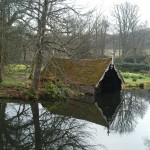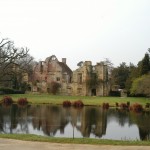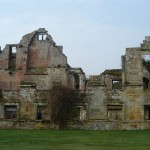Scotney
Background
Now situated on the picturesque grounds of a Victorian estate, Scotney Castle has a long and complex history dating to the 14th century. Believed to be the site of Sir Roger Ashburnham’s fortified and moated manor house, the aspects of the curtain wall, footings of the original gatehouse, and one complete circular tower are the only visible remains from the medieval phase. Roger Ashburnham served alongside William de Echyngham (owner of two other moated sites in the area) and Sir Edward Dallyngridge (of Bodiam Castle) as Conservators of the Peace in Sussex between 1376 and 1380. The exact date of the fortified manor and moat is unknown, but its similarities with Bodiam and the relationship of their owners suggest it may date to the later 14th century.
Scotney soon passed to the Darrell family, and most of the upstanding buildings seen today were added in the sixteenth and seventeenth centuries. The estate was purchased by Edward Hussey I in 1778 and through subsequent generations was transformed into a “ruined” castle nestled in a picturesque Victorian landscape, viewed from the window of the neo-Tudor country house at the top of the valley constructed in the mid-nineteenth century. The estate was bequeathed to the National Trust after the death of Christopher Hussey in 1970. For visitor information, visit the National Trust webpage.
Fed by the River Bewl and retained by an artificial bank, the moat forms three islands. The largest island likely formed the inner court while the middle island served as the outer court. The above-ground evidence is too scarce to reveal a clear picture of the medieval structures at the site, but the surviving tower suggests that there were likely three other towers at the other corners of the island (if the building was ever completed). For more information visit Scotney Castle’s English Heritage Detail.












Leave a Reply
You must be logged in to post a comment.